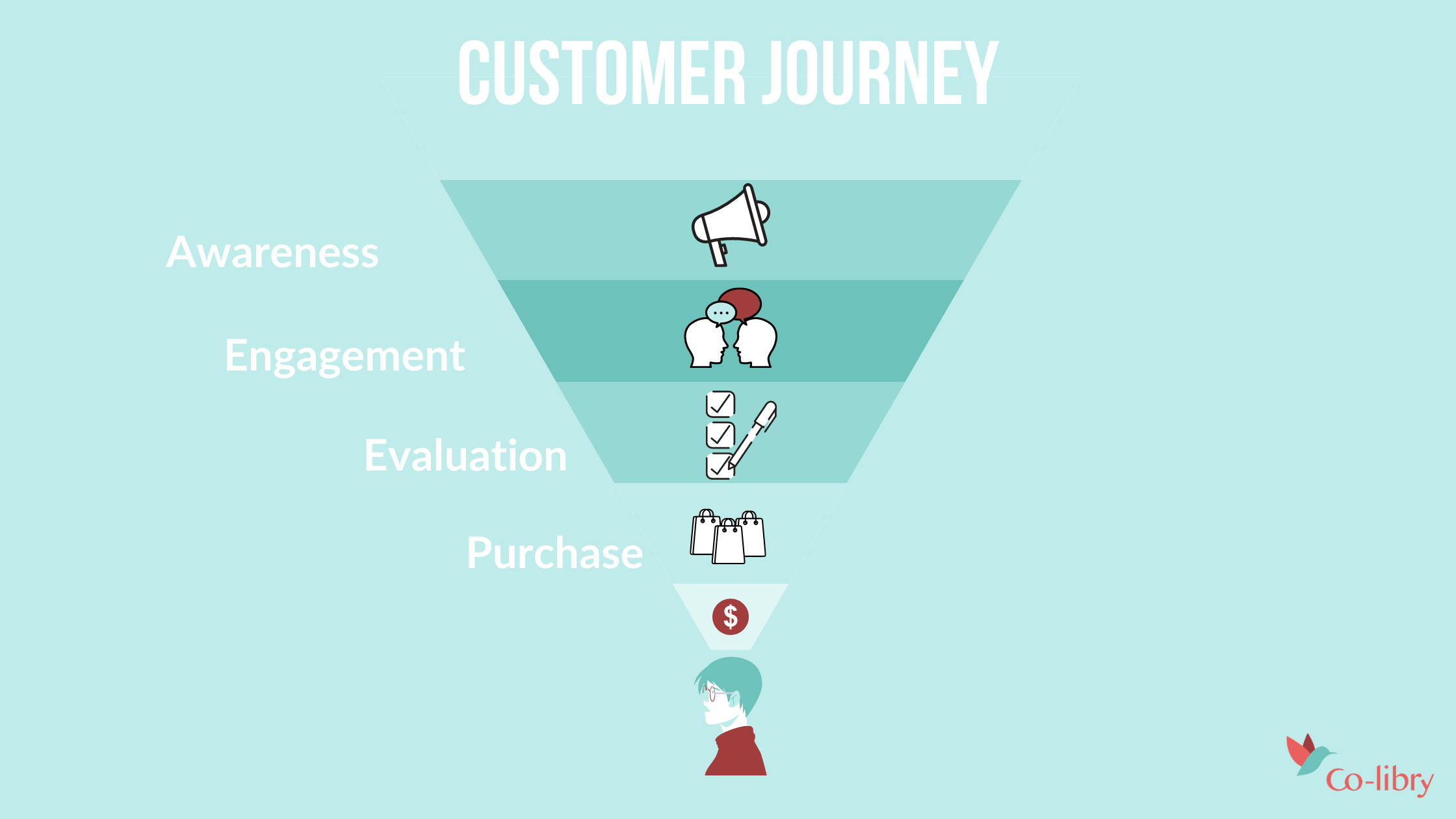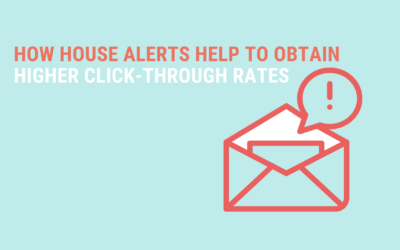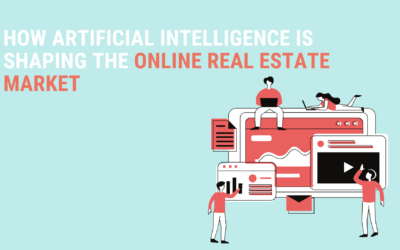Customer Journey on Real Estate Website
13 october 2020 | 4 min read

Every real estate portal has a customer journey that individual visitors have to go through in their quest to find their ideal property. Customer journeys look different for every real estate company. Some companies use a ten stage customer journey, and others opt for three distinct but straightforward stages (before purchase, during purchase, after purchase).
In the exploration phase, visitors may compare different cities or opt for a more specific search. As customers move through the phases, they may book appointments with the real estate company, view properties, and eventually buy a property. No matter what stage of the journey the customer is in, there are unique opportunities to show them relevant content.
Typically a portal gets more than 70% of their revenue from real estate brokers. And other revenue sources include direct listings, new constructions, data sales, and ancillary revenue streams, and only a small amount comes from display ads.
A top priority for real estate companies should be to show relevant ad content from banks, insurance companies, renovators, etc. without harming the user experience. One recent study found that customer experience is now the top priority for businesses in the next five years, overtaking pricing and products as the main focus point.
With that in mind, today, we’re going to discuss the following:
- What does a customer journey look like for real estate?
- The difference between standard personalization and hyper-personalization.
- The issues surrounding 2nd and 3rd party ads on real estate websites.
- Why the customer journey in real estate is more important now than ever before.
- Why the customer journey is a huge opportunity to increase revenue.
Let’s get started.
What Does a Customer Journey Look like for Real Estate?
Every visitor has to go through different customer journey phases, graduating from one stage before moving onto the next. Typically, this process will take a couple of months. A customer journey for real estate generally starts with searches in different cities with different types of properties. After a few comparisons and visits here and there, the visitors will have a more specific search.
Throughout each stage of the journey, there is an opportunity to communicate with the customer and push them content relevant to their buying situation. This is even true for the final moment of contact when the customer buys a property. At this point, they may be looking for loans, insurance contracts, renovation services, telecom providers, and moving services.
Here’s an example of a customer journey in real estate. As we stated above, customer journeys can be as detailed as you want to make them, but we’re going to use a 4 stage journey for this example.
Say hello to Mike. Mike has just received a job offer in a new city, and the job starts in 2 months. Mike has a wife and two children, and they will all be moving together as a family. Since the job is on the other side of the US, commuting to the job isn’t an option while he finds the perfect property. They will have to relocate in the two months before the job starts. With the clock ticking, Mike is unsure whether they should rent a property in the new city while looking for a more permanent solution, or whether they should buy as soon as possible.
Stages of Mike’s Journey
Awareness
Mike has become aware of his need for a new place to live in. Mike takes to Google to browse different property websites. He becomes aware of other real estate brands in the new city.
Engagement
Mike is now familiar with individual real estate companies and what they can offer him. He decides that he wants to rent a property instead of buying. He may have signed up for a newsletter or followed different real estate companies on social media. Brands will now treat Mike as a warm lead and push additional information to him about renting or buying properties under their management.
Evaluation
Mike is almost sure he wants to go with company X but will compare their reputation to other companies on the market by confusing research. Brand X will send supporting materials to Mike to reaffirm him.
Purchase
Mike decides to purchase (sign a rent agreement with company X).
Mike will also go through a buyer journey with the company he ultimately purchases from, experiencing several touchpoints, and possibly pain points along the way. Each of these touchpoints or pain points can make or break his experience.

Difference Between Standard Personalization and Hyper-Personalization
Unlike regular personalization (which incorporates personal and transactional information like name, title, organization, purchase history, etc. to communication), hyper-personalization goes one step further and utilizes behavioral and real-time data to create highly contextual communication that is relevant to the user.
Example of personalization
sending an email with the first name of the subscriber in the subject line. Or send an email with all new listings based on the saved search query.
Example of hyper-personalization
sending an email, advertising new bathrooms at the exact time a user should have the highest probability to converge if the user just bought a house, and the bathroom needs to be renovated.
Here’s the Problem…
According to marketing firm Yankelovich, the average person today is exposed to around 5,000 ads per day . The staggering number of ads we are exposed to every day makes it difficult for anyone’s ad to shine through. The more ads released, the less effective they become. With so many ads bombarding us, even the most well-crafted messages become little more than noise. This oversaturation of ads is also a problem for brands and advertisers. Usually, people ignore the ads, deeming them annoying or irrelevant to their needs at that exact moment.
Why Is This More Important than Ever Before
During the COVID-19 pandemic, the revenue of real estate portals dropped dramatically. Rightmove’s half-year revenue was down a staggering 34%. While the situation is looking dire for some real estate portals, there are still proven ways to increase revenues. Third-party ads could be an excellent solution for many portals.
Currently, many portals around the world don’t utilize third party ads to supplement revenue. And if they do, there are strict limitations and parameters on their use.
A 2018 report from dealroom.com, in conjunction with Schibsted, showed that $9 trillion was spent on consumer household spending with 30% of that being on housing (easily the largest segment). The report’s main thrust is that the housing market, although easily the largest, is the least sophisticated when it comes to money changing hands online. In other words, a lot of money is being left on the table.
Here’s what Ramón de la Guardia has to say. According to Ramón, the opportunity is enormous as property portals have the perfect audience:
“decision-makers or influencers in their homes, so the portal has the key persons, not just thinking about selling them a house but all related services such as utility companies (electricity, telecom) financial products, etc.”.
Although not technically a portal and hardly comparable in terms of scale, Amazon is essentially a website that does something very similar to portal sites. In 2019 the company saw its advertising revenues grow a whopping 39% to $14.1 billion.
Even if you don’t see Amazon as a great comparison because of its size, other similar companies have experimented successfully with different types of advertising. Before Lifull bought it out in 2019, Mitula consistently generated around a third of its revenues from Adsense doing the same thing as the portals: advertising property.
Opportunity
Yes, third party advertising can harm the user experience and make your real estate website look more spammy. But it doesn’t have to be that way. There is a right and a wrong way to approach third-party ads.
What if you would use third party ads to improve your user experience and offer it as additional services next to buying or renting a property?
Depending on the customer journey phase they are in, you can show them the right advertisement at the right time.
What if you would show extremely personalized advertisements to visitors. Show them the right ad at the right time before they even know they need it.
For example, you can introduce a hyper-personalized ad around the moment of final contact when the customer is almost ready to buy the property. You can show them an advertisement for a specific bank to help them in the next stage of the journey (the final purchase). This ad has very low relevance to them when they are just browsing your site, but is hugely relevant in the latter stages of their journey.

Increase Your Revenue with Personalized Advertisements
Typically, portals have low conversion rates, and revenues are based on regular marketing campaigns. This is where we come in. We allow you to run several marketing campaigns simultaneously (e.g., loan for investors, loan for first time buyers, bathrooms, kitchens, moving ads). And we show only the most relevant content (listings and ad campaigns) to a specific user.
Want to see this in action? Here is one of our case studies where we tested a bank advertising campaign on a real estate portal.
When done right, third party ads can boost revenues and improve the customer experience. According to Harvard Business Review, there’s a 38% revenue growth of the product when customers receive transparent ads based on their activity on a site. It turns out, customers do like ads; they just only want to see the best and most relevant ads for their situation.

AI and personalization made easy
Schedule your call today!


How House Alerts Help To Obtain Higher Click-Through Rates
Thanks to house alert systems, you can quickly inform potential buyers when new properties that match their criteria show up. Here is a step-by-step guide that will show you how you can retarget potential customers and help them find the house of their dreams.
Two Unique Dashboards That Will Help Your Real Estate Agents Close More Deals
Being successful in sales is about knowing your product inside out and knowing everything there is to know about your customer. Luckily, it’s easier to achieve these two goals today than ever before by using some unique dashboards. Read everything about it here:
How Artificial Intelligence is Shaping the Online Real Estate Market
Now in 2021, the message is clear; AI is here, and it’s here to stay. But what impact does this technology have on the real estate market? Read everything about it in this article



